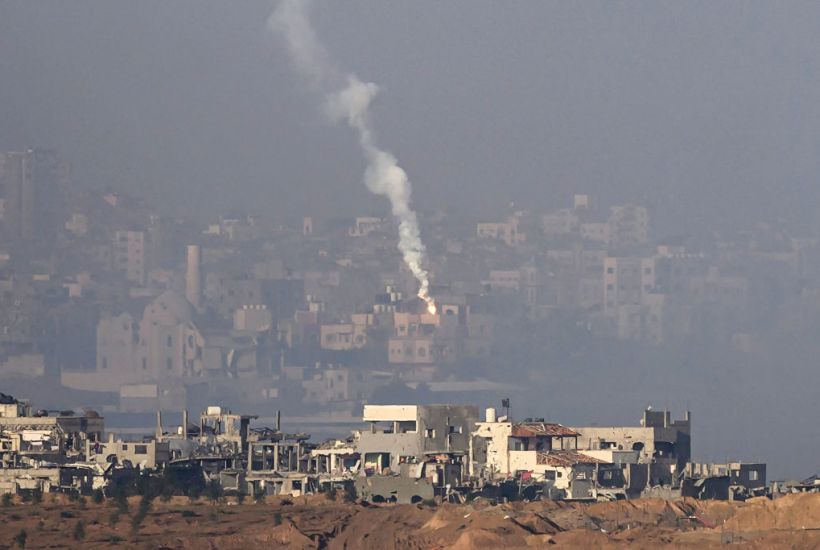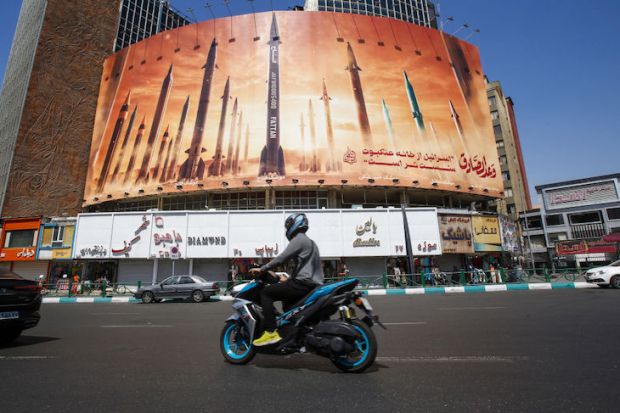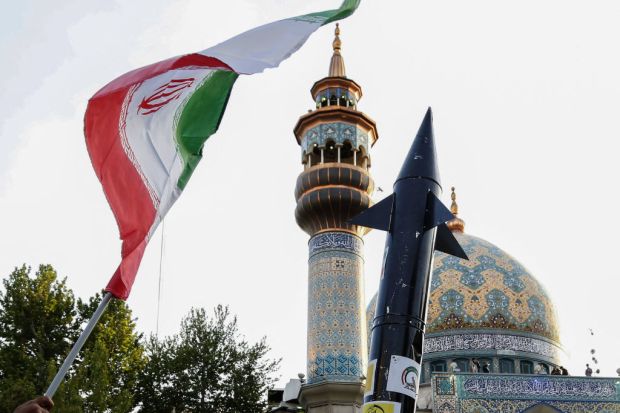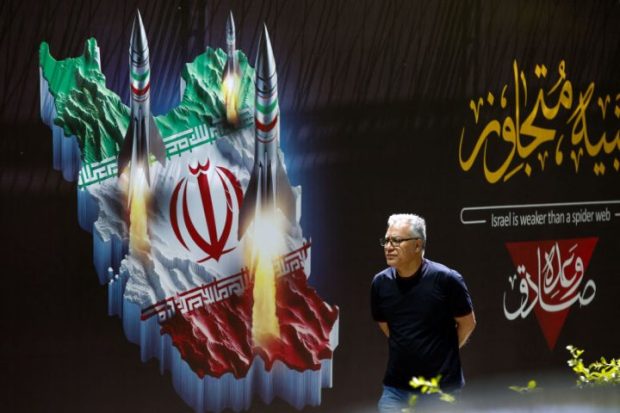All generals plan military operations based on the ten principles of war – rules if you like, which if adhered to will provide the best chance of success. The most important of these principles is the selection and maintenance of an aim.
Even if every Hamas terrorist in Gaza is killed or captured, it is questionable whether that would mean that the group has been truly destroyed
The aim should always be a single, unambiguous and easily understood objective – such as destroying the enemy located on Hill X. It then follows that everyone, from the most senior officer to the lowest ranked soldier, knows what needs to be done and can build their tactical plans around that single, achievable goal.
The issue for the Israeli Defence Forces is that its aim in Gaza – the complete annihilation of Hamas – is at best nebulous and is now at risk of undermining Israel’s entire military strategy. Rather than destroying Hamas, President Benjamin Netanyahu’s actions have created a humanitarian disaster, and all the indicators suggest that the West is now running out of patience.
The message from the Biden administration was clear when Antony Blinken, the US Secretary of State, said recently: ‘Far too many Palestinians have been killed’ in Gaza. President Emmanuel Macron of France went further in a recent interview, stating that Israel must stop killing women and babies.
The central flaw in Prime Minister Benjamin Netanyahu’s aim is that Hamas is a terrorist organisation whose leadership principally resides outside of Gaza and mainly in the Gulf state of Qatar. Hamas is funded and equipped by a global network of charities and friendly nations using crypto currencies and hard cash to purchase weapons, most of which are smuggled into the area through a 300-mile network of tunnels, known as the Gaza Metro, which extends into Egypt. So the size of the task facing the IDF was and is immense. Even if every Hamas terrorist in Gaza is killed or captured, it is questionable whether that would mean that the group has been truly destroyed.
Nevertheless, the IDF has set about its aim of destroying Hamas by pulverising large sections of Gaza, leaving thousands dead and many more wounded, including an appalling number of children and babies. Casualty figures are supplied by the Hamas-controlled health ministry but are largely accepted by most western countries.
Added to this, over one million people have been displaced, tens of thousands are homeless and many Palestinians are now on the brink of starvation or dying of thirst. This is after the fighting has really only just started and it could continue for months, traumatising both the Palestinian civilians and the Israeli soldiers embroiled in bloody street fighting.
Amir Avivi, former deputy commander of the Gaza division of Israel’s military, said he believed that the fighting could continue for at least a year. In an interview with the BBC, he said: ‘In order to achieve this mission we need to take control of the whole Gaza strip because everything is underground. There is no way to deal with it from the air. It is not effective and also in order to really dismantle all of the terrorist infrastructure which will probably, by the way, take more than a year, just dismantling it. It can only be done by ground forces and combat engineers. The infrastructure is everywhere all the way to the border with Egypt.’
From a purely military point of view, the creation of a humanitarian disaster, in the midst of a military operation is a monumental problem. Where do you bury dead civilians in the middle of an ongoing conflict? How do you look after the wounded? How do you prevent a localised famine when hundreds of thousands of people have no access to food and water?
Netanyahu has repeatedly tried to place the blame of the unfolding human catastrophe on Hamas – after all, he argues, they started this. But that argument is wearing thin in western capitals, who until recently have offered full-throated support for Israel. The big question facing Israel now is when the fighting eventually stops – who will be responsible for what happens next?
Colin Powell, the late chairman of the Joint Chiefs and the US Secretary of State, was aware of this very issue when he told US President George Bush prior to the start of the Iraq war: ‘Mr. President, it isn’t just a simple matter of going to Baghdad. I know how to do that. What happens after? You need to understand, if you take out a government, take out a regime, guess who becomes the government and regime and is responsible for the country? You are. So if you break it, you own it. You need to understand that 28 million Iraqis will be standing there looking at us, and I haven’t heard enough of the planning for that eventuality.’
It is not difficult to imagine senior members of the IDF having similar discussions with Netanyahu, if not immediately prior to the ground invasion then certainly now.
The next phase of Israel’s military operation mission appears to be the targeting of the city of Khan Yunis in the southern part of the Gaza Strip, after the IDF warned residents to evacuate the area. The problem for the Palestinians, and ultimately the IDF, is where they go next, given that many sought sanctuary in the city in the belief that it was relatively safe.
If the IDF sets about bombing Khan Yunis with the same ferocity with which it attacked Gaza city in the north, then it is difficult to imagine that the US will remain silent.
Major General Charlie Herbert, a former British senior officer, has been critical of Israel’s military approach, describing an IDF airstrike on the Jabalia refugee camp in Northern Gaza, as ‘collective madness’ He added: ‘How can the world watch on – impotent, complicit or simply disinterested in the daily massacre of Palestinians in Gaza. What next? Will Israel be allowed to do this to the southern and now more populated half of Gaza next? Everyone supports the need to defeat Hamas. Of course we do. But it’s immoral and unethical to choose to do so in a way that kills and maims so many civilians, especially children, when there are other options available.’
And with reference to the ongoing military operation surrounding the al-Shifa hospital, which the IDF believes houses a subterranean Hamas HQ, he added: ‘I personally have no doubt in my mind that Hamas were using the hospital for military purposes. It’s pretty much their standard modus operandi and in step with an organisation that carried out the 7 October massacres. So, for a brief period I’m right behind the IDF. But that doesn’t in any way undermine my wider criticism about their tactical and operational conduct in this war. Which I think is unethical, borderline immoral and potentially illegal. Oh, and self-defeating too.’
Gen Herbert’s suspicions appeared to be confirmed after the IDF released footage that it says shows the first solid evidence of a sophisticated Hamas tunnel network underneath the hospital complex. The IDF said troops operating near the in-patients building at al-Shifa found a booby-trapped pickup truck in a garage inside the medical complex’s walls. When the vehicle was destroyed in a controlled explosion, a tunnel was exposed beneath the floor of the garage.
In footage recorded by army robots, a tunnel shaft about ten metres long can be seen leading to a 55-metre-long tunnel. The tunnel contained electrical wiring and sloped downwards, ending at a blast-proof door, with a small slot through which to fire weapons. Israel has now also released CCTV footage which it says is of hostages being taken to al-Shifa on October 7th.
But regardless of what the IDF finds at al-Shifa, the question of how Israel continues this war is going to be much more difficult to answer.
Got something to add? Join the discussion and comment below.
Get 10 issues for just $10
Subscribe to The Spectator Australia today for the next 10 magazine issues, plus full online access, for just $10.




















Comments
Don't miss out
Join the conversation with other Spectator Australia readers. Subscribe to leave a comment.
SUBSCRIBEAlready a subscriber? Log in